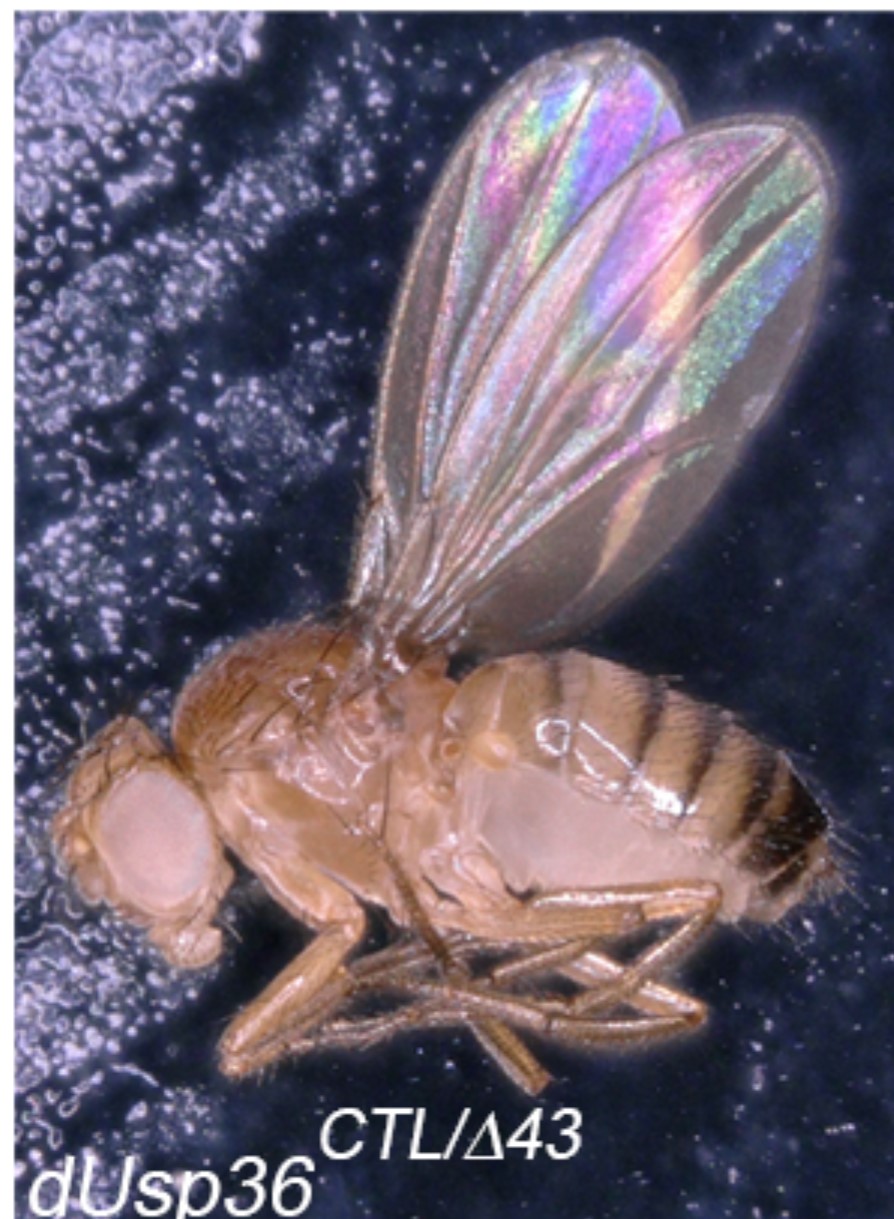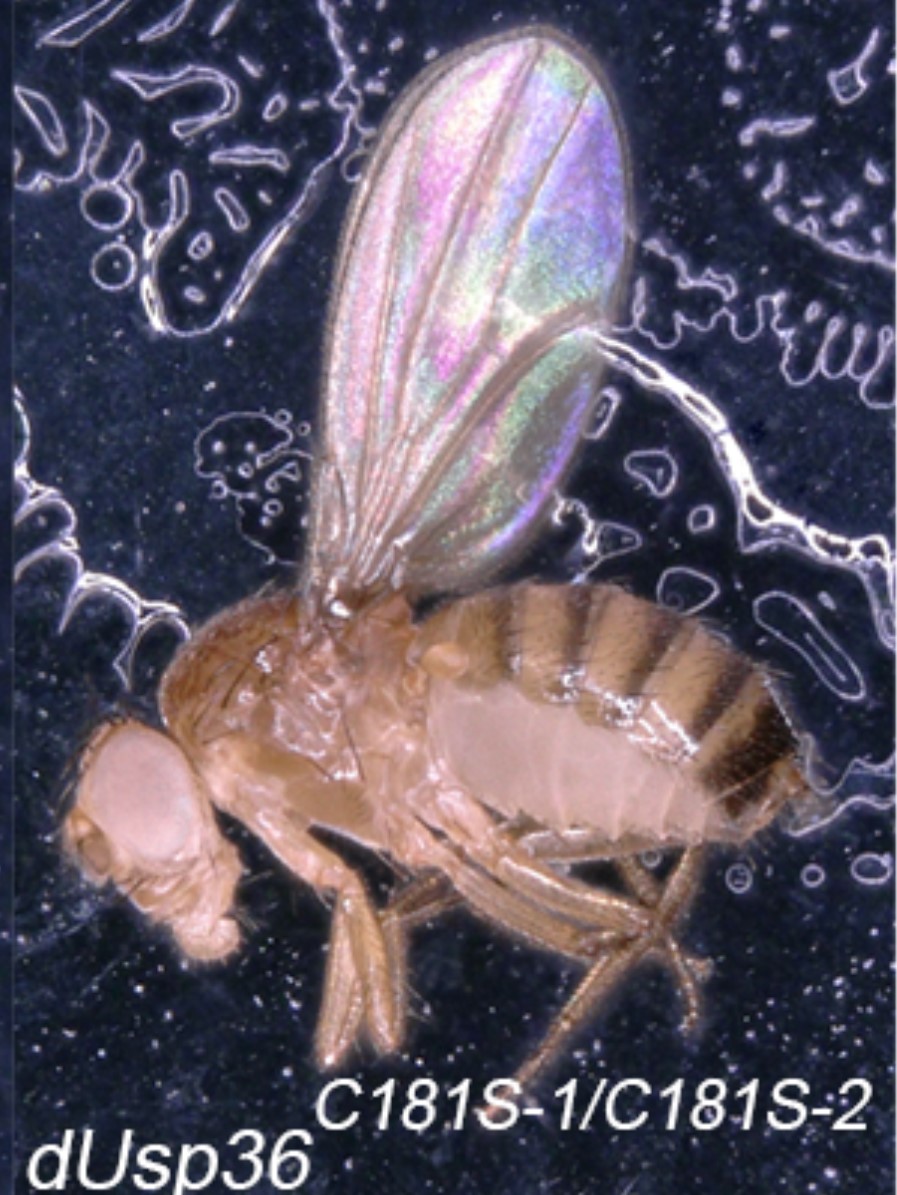Deubiquitinases (DUBs) are enzymes that remove ubiquitin* from ubiquitinated proteins and thus participate in the regulation of numerous cellular processes. Among them, USP36 plays a central role in stabilizing several proteins such as the MYC oncogene, a major regulator of cell growth and proliferation whose deregulation is at the root of many cancers. Using the Drosophila fly as a genetic model, the
CEA-Irig/Gen&Chem team explored the mechanisms of action of this enzyme in order to distinguish between functions that are dependent or independent of its catalytic activity.
Using genome editing via the innovative CRISPR/Cas9* technique, researchers produced flies expressing a mutated version of USP36 lacking enzymatic activity. While mutants that no longer express the USP36 protein die early during development with severe growth defects (see
Figure 2), catalytic mutants of USP36 survive and develop normally (see
Figure 3). However, males carrying this mutation are sterile and have spermatogenesis defects. This contrast reveals that the presence of the USP36 protein is necessary for growth, but that its catalytic activity is not. On the other hand, the enzymatic activity of this protein is crucial for sperm formation.
This study shows that the deubiquitinase USP36 has a novel dual mode of action, acting either as a structural protein or as an active enzyme, depending on the context. This opens up new perspectives on the non-enzymatic roles of deubiquitinases in cell development and physiology.



Figure 1 on the left: normal Drosophila.
Figure 2: mutant no longer producing USP36 protein. Figure 3 on the right: catalytic mutant of USP36.
Ubiquitin* is a small, highly conserved protein that covalently binds to other proteins to modulate their stability, localization, or activity.
CRISPR/Cas9* is a genome editing technique that uses an enzyme (Cas9) guided by RNA to cut DNA at a specific site, allowing a gene to be inactivated or a specific modification to be introduced.
Fundings
- IDEX Université Grenoble Alpes,
- GRAL PhD Program